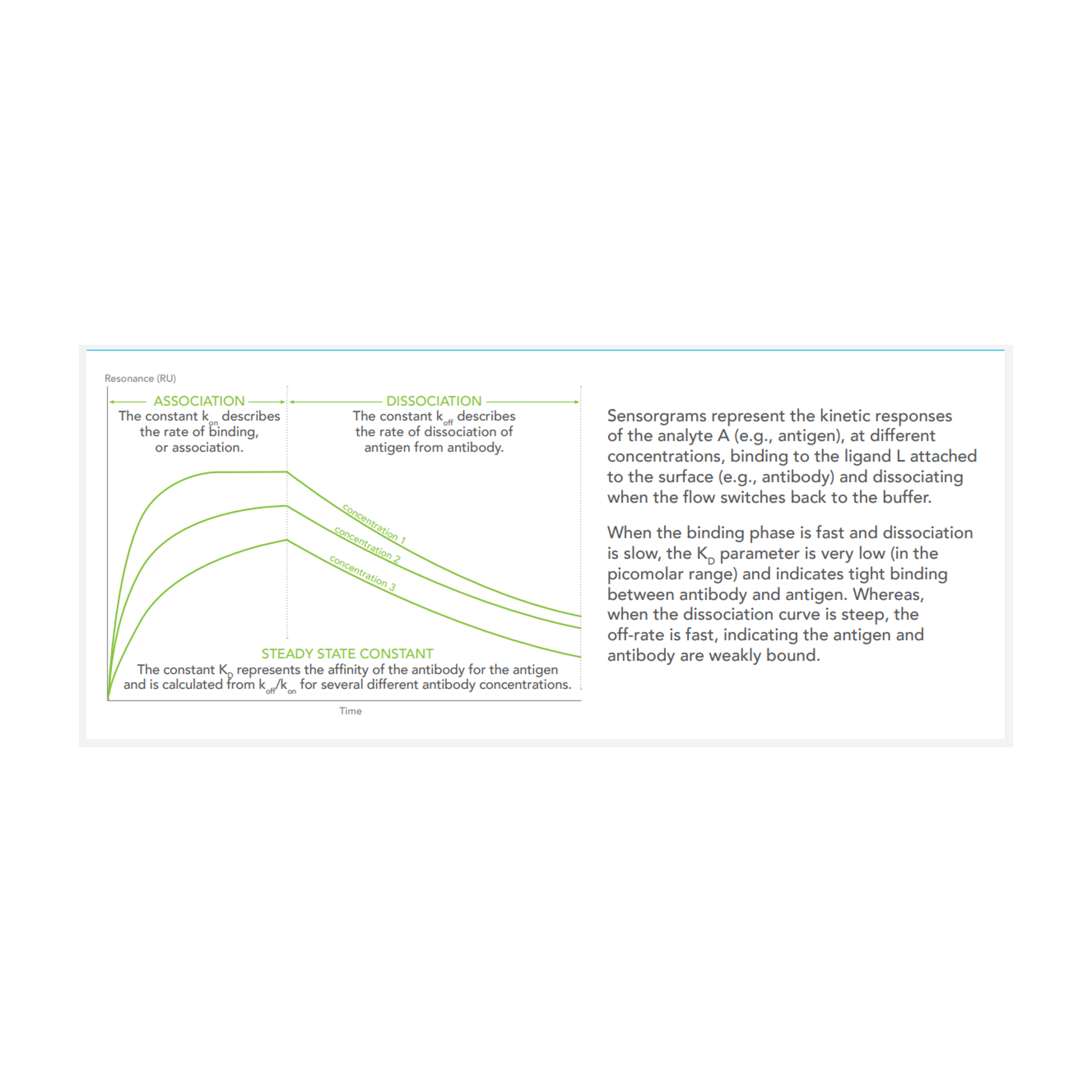.png?width=2240&height=1260&name=KO%20Blog%20post%20(1).png)
How We Use Carterra’s LSA to Understand Antibody Performance at Scale

There’s something deeply satisfying about watching complex data fall into place. In the world of recombinant antibody development, that moment often comes when we load a panel of antibodies onto the Carterra LSA and begin visualizing the dynamics of binding affinities unfold in real time.
For those not yet familiar, the Carterra LSA is a high-throughput surface plasmon resonance (SPR) platform designed to assess large panels of antibodies simultaneously. At Aviva, we offer a service to generate high-resolution data for affinity measurements, epitope binning, and mapping using this technology. Moreover, we leverage this precision data in our antibody manufacturing process. These capabilities give us not only a sharper lens for evaluating antibody performance, but also the confidence to move forward with candidates that are reproducible, specific, and biologically relevant.
 High-Throughput Affinity: Measuring the Strength of Interaction
High-Throughput Affinity: Measuring the Strength of Interaction
The measurement of the strength with which an antibody binds to its target antigen, its affinity, is one of the clearest indicators of antibody quality. On the LSA, we’re able to capture affinity data across hundreds of antibodies in a single run, measuring both the association and dissociation kinetics with exceptional resolution.
The result is a set of kinetic sensorgrams: clean, real-time binding curves showing how each antibody interacts with the antigen across a dilution series. From these traces, the software calculates kon (on-rate), koff (off-rate), and KD (equilibrium dissociation constant) values. These measurements are plotted across the panel so we can directly compare antibodies side by side.

Example: kinetic sensorgrams and affinity plot from a high-throughput run on the Carterra LSA. Each curve represents one antibody’s binding profile.
This format gives us scale and precision. We can see at a glance which antibodies bind tightly and stably, which dissociate rapidly, and which ones may have ideal kinetics for particular assay formats—such as slower off-rates for capture assays or fast association for high-throughput detection.
Epitope Binning: Building Antibody Communities
While affinity tells us how strongly an antibody binds, epitope binning tells us where. This is especially useful when characterizing multiple antibodies raised against the same antigen, or when searching for complementary antibody pairs that recognize distinct epitopes.
Binning on the LSA is performed using a matrix format where one antibody is immobilized and others are injected in the presence of antigen to test for competitive binding. The data is then visualized in a community plot—essentially a network map showing which antibodies compete for the same or overlapping epitopes.
 Example: epitope community plot. Each node represents an antibody; connected nodes compete for the same or overlapping epitopes.
Example: epitope community plot. Each node represents an antibody; connected nodes compete for the same or overlapping epitopes.
These plots often organize antibodies into “communities” or “bins,” based on shared binding behavior. We can then use this information to:
- Select antibody pairs for sandwich ELISAs or multiplex assays
- Identify unique epitope binders for functional studies
- Understand the diversity of epitope coverage across a panel
A diverse panel of binders that cover multiple bins is often more valuable than a panel crowded into a single epitope space. This insight helps guide both product selection and further development.
Why This Matters for Our Customers
At Aviva, we are committed to delivering high-performance recombinant antibodies. We aim to offer reagents that researchers can trust to work consistently, across applications. The Carterra LSA helps us do this with confidence. Its high-throughput SPR capabilities give us both breadth and depth of insight: affinity measurements you can rely on, and epitope resolution that makes your assay design easier and more flexible.
Our data-driven approach allows us to:
- Confirm specificity with kinetic rigor
- Avoid clone redundancy with detailed binning
- Design antibody pairs with non-overlapping binding sites
- Support reproducibility with fully characterized reagents
In antibody development, as in science generally, it’s not enough to say “this works.” We want to know why, and how well, and what else might work better. The Carterra LSA helps us do exactly that.
If you’re interested in learning more about how we use the Carterra LSA, or if you need help characterizing your own antibody candidates, please reach out to our team! We’d be happy to support your next discovery.


.jpg?width=450&height=726&name=Image%20(10).jpg)